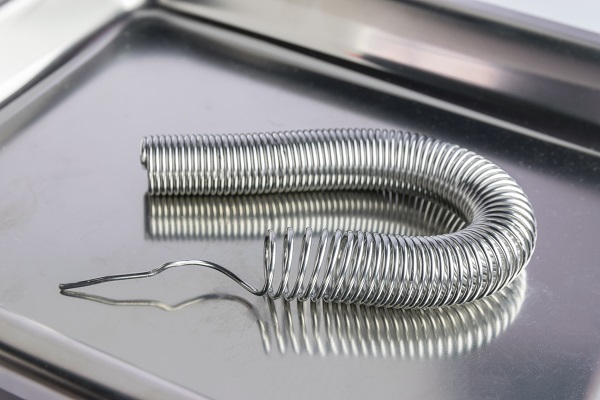Stainless steel springs have gained popularity in the recent years due to their special properties. Corrosion resistance is one of the most common reasons for selecting these springs. These springs can resist rust, and chemicals, which makes them ideal for processing and food industries. Does that pique your interest? If yes, this post will introduce you to different aspects of their popularity.
Stainless Steel – A Wonder Material
Stainless steel is considered a real wonder material by many scientists. It is one of those materials, which has evolved over centuries. In 1913, Harry Brearly noticed that tough gun barrels that were left outside in rain for a long time didn’t rust. He took the barrels to lab and found that they had 13% chromium, which contributed to the anti-corrosive property. This news was published in the 1915 edition of New York Times. Thus, stainless steel became the first wonder material of the 20th century.
Stainless steel is an alloy steel including 10% chromium, and offers excellent corrosion resistance in harsh environments. Many new variants of stainless steel have improved temperature resistance. Generally, stainless steels are classified into four types – ferritic, martensitic, precipitation hardening, and austenitic. Typically, austenitic, and precipitation hardening steels are considered as ideal spring materials. The following are some popular materials austenitic and precipitation hardening steel materials used for spring construction.
- 300 Series Stainless Steel: These austenitic SS variants are alloyed with 10-20% nickel and 17-25% chromium. The nickel present in the alloy contributes to its excellent corrosion resistance, and helps improve its durability and ductility. 300 series is usually hardened by cold working. This means it is not hardenable by heat treatment.
- Stainless Steel Type 302: This stainless steel type is austenitic, ductile, as well as strong. Type 302 is one of the heat resisting steel variants, which is strengthened by cold working. Stainless steel 302 springs are used in sanitary, pressure-containing, and cryogenic applications. This variant has silver gray color.
- Stainless Steel Type 304: Type 304 is a non-magnetic alloy, which can withstand high temperatures. Stainless Steel 304 offers strong resistance against corrosive acids. Thus, stainless steel type 304 springs are used in various applications where they may come in touch with corrosive acids. Also, type 304 has low carbon, which helps avoid carbide precipitation. The springs made from this variant are largely used in food, pharmaceutical, dairy, cryogenic, and chemical industries.
- Stainless Steel Type 316: This alloy has lower carbon content than 302, which helps lower carbide precipitation in welding applications. The SS variant provides extra corrosion resistance due to the molybdenum content. Stainless steel type 316 springs are suitable for marine environments, sub-zero temperatures, and can be used in industries that demand extra hygiene such as food and pharmaceuticals. Type 316 variant is distinguishable due to its silver gray color.
- Stainless Steel Type 301: Stainless steel type 301 is hardened by cold working, and is non-hardenable by heat treatment. It can achieve high ductility and tensile strength by cold working. Type 301 is nonmagnetic in the annealed condition, and becomes magnetic after the cold formation.
- Stainless Steel 17-7: Stainless steel type 17-7 springs can withstand high temperatures than type 316 or 302. Typically, this steel is alloyed with chromium, nickel, and aluminum. The maximum temperature limit of this spring is 650°F (343° C).
With such abundant varieties of stainless steel springs available for purchase, the choice will depend on your application requirement. Also, you can approach any well-known stainless steel manufacturer to understand benefits of each of the above types. In the next post, we will discuss several other factors of their popularity.

